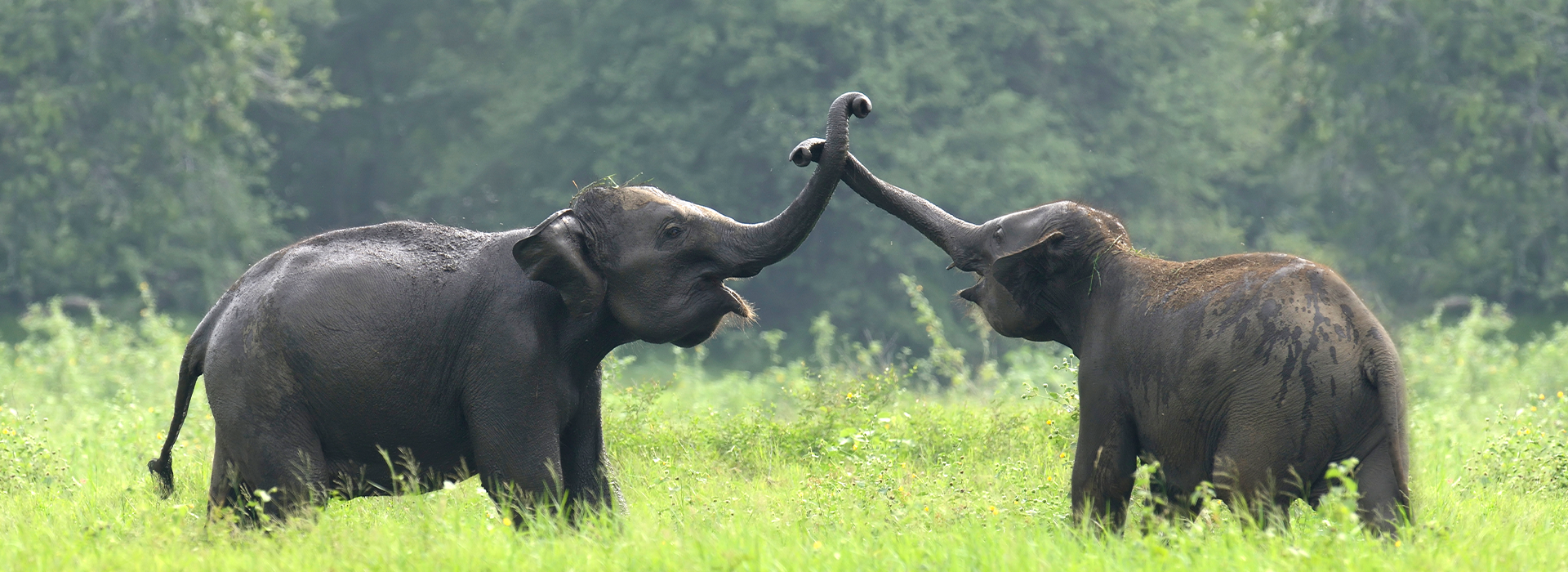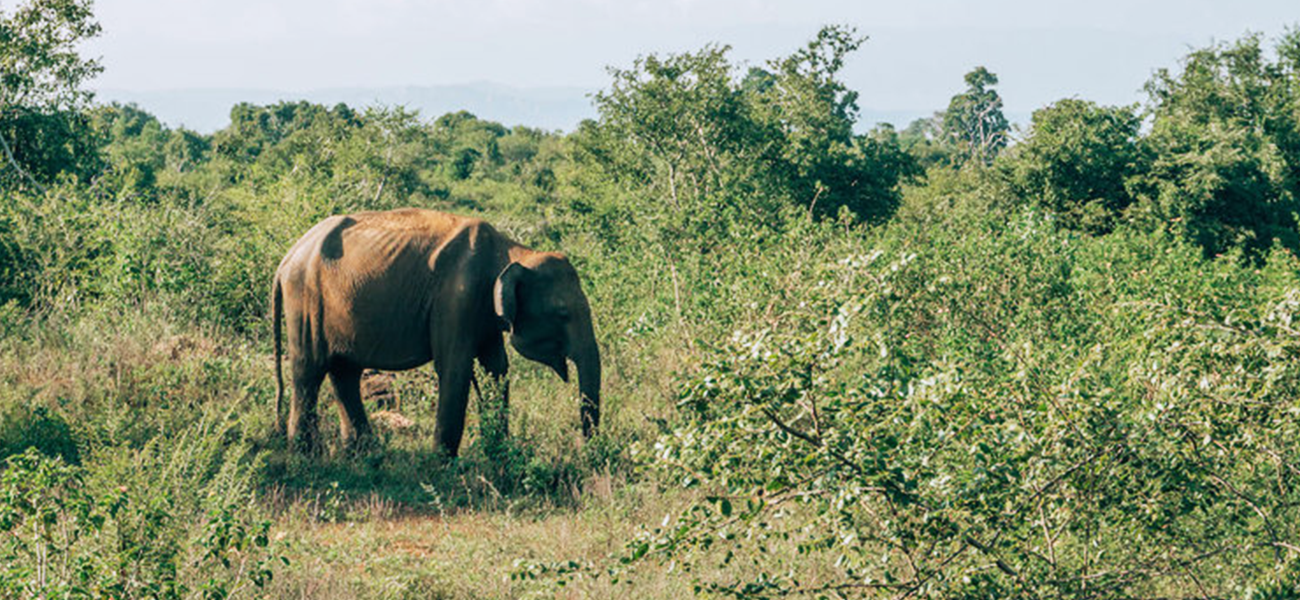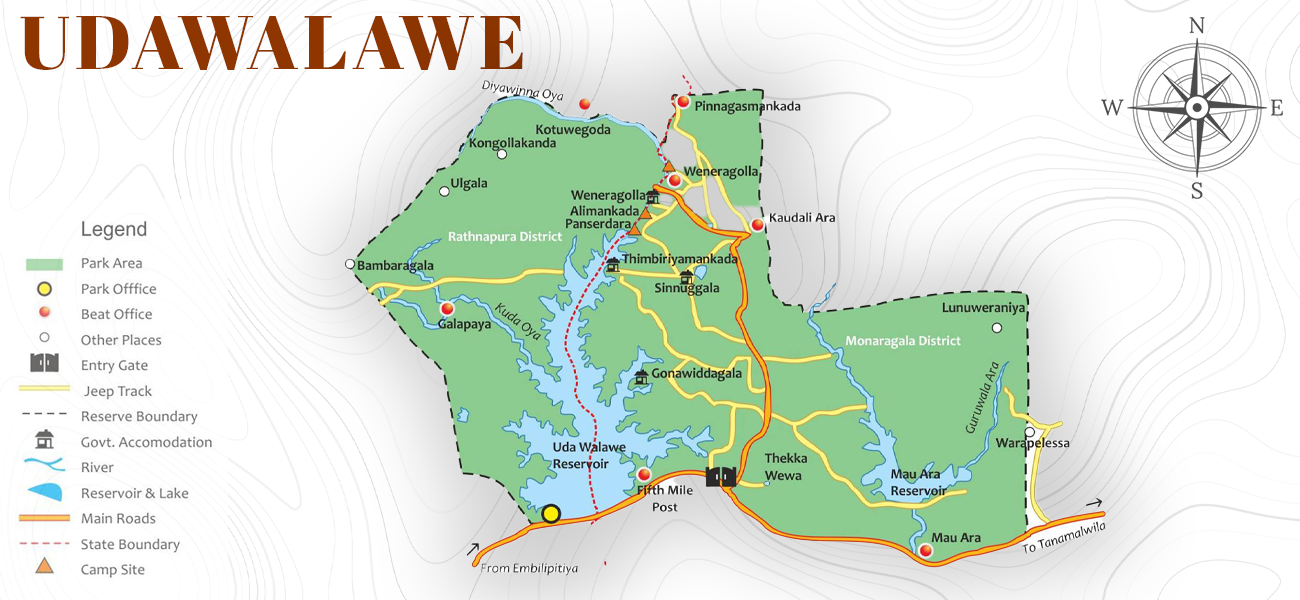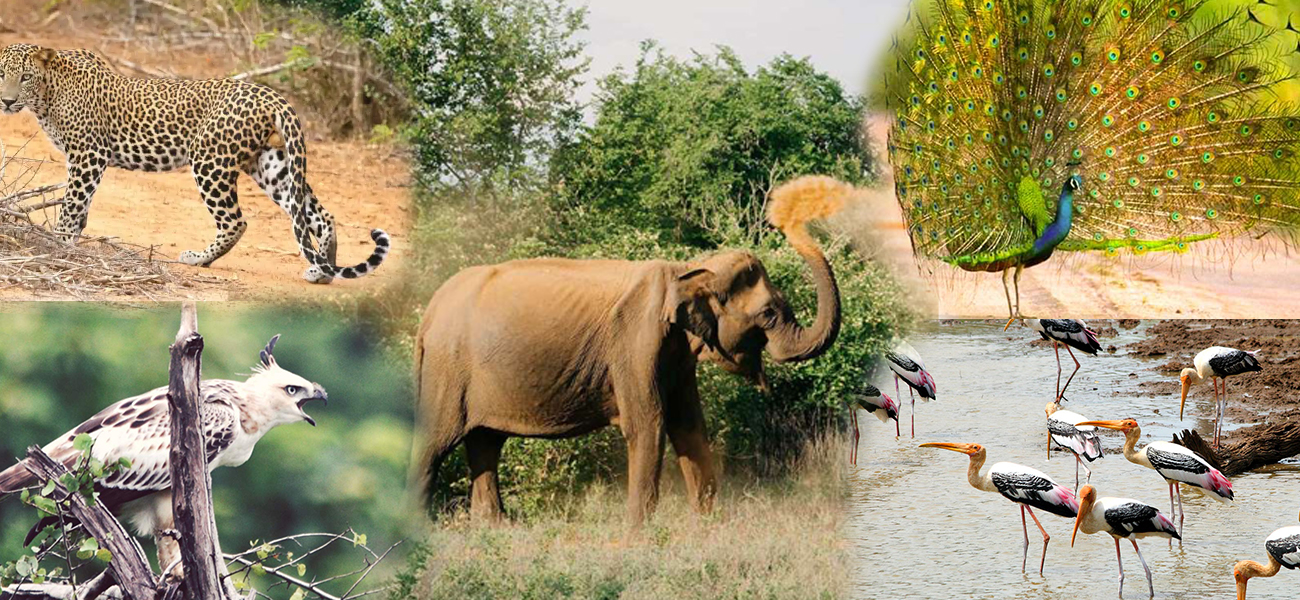




Udawalawe National Park is located in southern Sri Lanka, right between the Sabaragamuwa and Uva provinces. It’s about a 4 to 5-hour drive from Colombo (around 165 kilometers away), making it one of the easiest wildlife parks to reach from the capital or other major destinations like Ella, Mirissa, and Tangalle.
If you’re planning a trip through Sri Lanka’s southern region, Udawalawe fits perfectly into your route — whether you’re coming from the hills or heading down to the coast. And the drive itself is part of the experience: as you leave the busy towns behind, you’ll pass lush countryside, small villages, and open landscapes that signal you’re getting closer to the wild.
The park itself is massive — over 30,000 hectares of open plains, dry grasslands, scrub forests, and the beautiful Udawalawe Reservoir at its heart. This reservoir isn’t just scenic; it’s a vital water source that attracts elephants, birds, and other wildlife, especially during the dry season.
Unlike some of the more forested parks in Sri Lanka, Udawalawe’s wide-open terrain makes it much easier to spot animals — perfect if this is your first safari. And since the park is relatively flat, even a short half-day jeep safari gives you a great chance to see elephants, buffalo, deer, and dozens of bird species in their natural habitat.
Whether you’re a photographer, a wildlife lover, or just someone looking for a peaceful escape into nature, Udawalawe National Park is one of Sri Lanka’s best safari destinations — accessible, beautiful, and filled with unforgettable wildlife encounters.

If you’re dreaming of seeing wild elephants up close in their natural home, Udawalawe National Park should be at the top of your list. It’s one of the few places in the world where elephant sightings are almost guaranteed — and often, not just one or two, but entire herds wandering through open grasslands or cooling off by the reservoir.
Unlike Sri Lanka’s more famous Yala National Park, which is known for its leopards but can get crowded, Udawalawe offers a much quieter and more relaxed safari experience. The atmosphere here is calm, the scenery is wide and open, and the wildlife viewing feels personal and uncrowded. It’s the kind of place where you can really slow down, breathe in the wild air, and just enjoy being surrounded by nature.
But there’s more to Udawalawe than elephants. The park is also home to water buffalo, sambar deer, jackals, crocodiles, and over 180 species of birds — from giant eagles and owls to colorful kingfishers and bee-eaters. For birdwatchers and photographers, it’s a paradise. And because of the park’s open terrain, your chances of spotting animals during a safari here are often higher than in more forested areas.
What makes Udawalawe truly special is that it offers an authentic wildlife experience without the hassle. You don’t need to book months in advance or fight for space in a line of safari jeeps. It’s simple, beautiful, and wildly rewarding — especially for travelers who want something real and unforgettable during their time in Sri Lanka.
While elephants are the undeniable stars of the show at Udawalawe National Park, they’re just one part of the rich wildlife tapestry that makes this park so special. From the moment your jeep rolls through the gates, you’re entering a world teeming with life — and the park’s open landscapes give you a front-row seat.
The most iconic residents are, of course, the Sri Lankan elephants. With over 250 of them roaming freely, you’re almost guaranteed to see at least a few during your safari — sometimes just one or two, other times entire families with babies in tow. Watching them bathe, graze, or walk right across the trail in front of you is nothing short of magical.
But Udawalawe has much more to offer than just elephants. Look closely and you might spot water buffalo lounging in the muddy shallows, or a group of spotted deer grazing in the tall grass. Keep an eye on the trees — macaques and langur monkeys often swing through the branches, while jackals and mongooses may dart through the bushes.
The park is also a paradise for bird lovers. With over 180 species of birds, including crested serpent eagles, peacocks, storks, kingfishers, and bee-eaters, there’s something colorful and fascinating around every corner. Even if you’re not an experienced birder, your guide will help point out the most unique sightings.
And if you’re lucky? You might even catch a glimpse of a monitor lizard, crocodile, or the very shy leopard — though leopards in Udawalawe are extremely rare and hard to spot.
Every safari is different, which is part of the excitement. Whether you’re coming for the elephants, the birds, or just the thrill of the wild, Udawalawe offers one of the most rewarding wildlife experiences in Sri Lanka.

Getting to Udawalawe National Park is easier than you might think, especially if you’re traveling through southern or central Sri Lanka. Whether you’re starting your journey in Colombo, Ella, Mirissa, or even Yala, Udawalawe is well connected by road and makes a convenient stop along most tourist routes.
From Colombo, the drive takes about 4.5 to 5 hours by car. If you’re coming from Ella, the scenic hill-country town, it’s roughly 2 to 2.5 hours. From beach destinations like Mirissa or Tangalle, expect around 2 to 3 hours on the road. Most travelers choose to hire a private car with a driver or arrange a transfer through their hotel or guesthouse — it’s the fastest and most comfortable option.
Public transport is also available for budget-conscious travelers. You can take a bus to Udawalawe town, followed by a short tuk-tuk ride to your hotel or the park entrance. However, buses can be crowded and irregular, so if you’re traveling with luggage or on a tight schedule, a private vehicle is usually worth the extra cost.
Once you arrive, most accommodations are within 10 to 15 minutes of the park’s main entrance, making it easy to head out for a morning or afternoon safari. Some hotels even offer on-site safari booking services or partner with trusted local guides, so you can arrange everything without leaving your room.
No matter where you’re coming from, the journey to Udawalawe is part of the adventure — winding roads, rural landscapes, and the feeling that you’re about to experience something truly wild.
